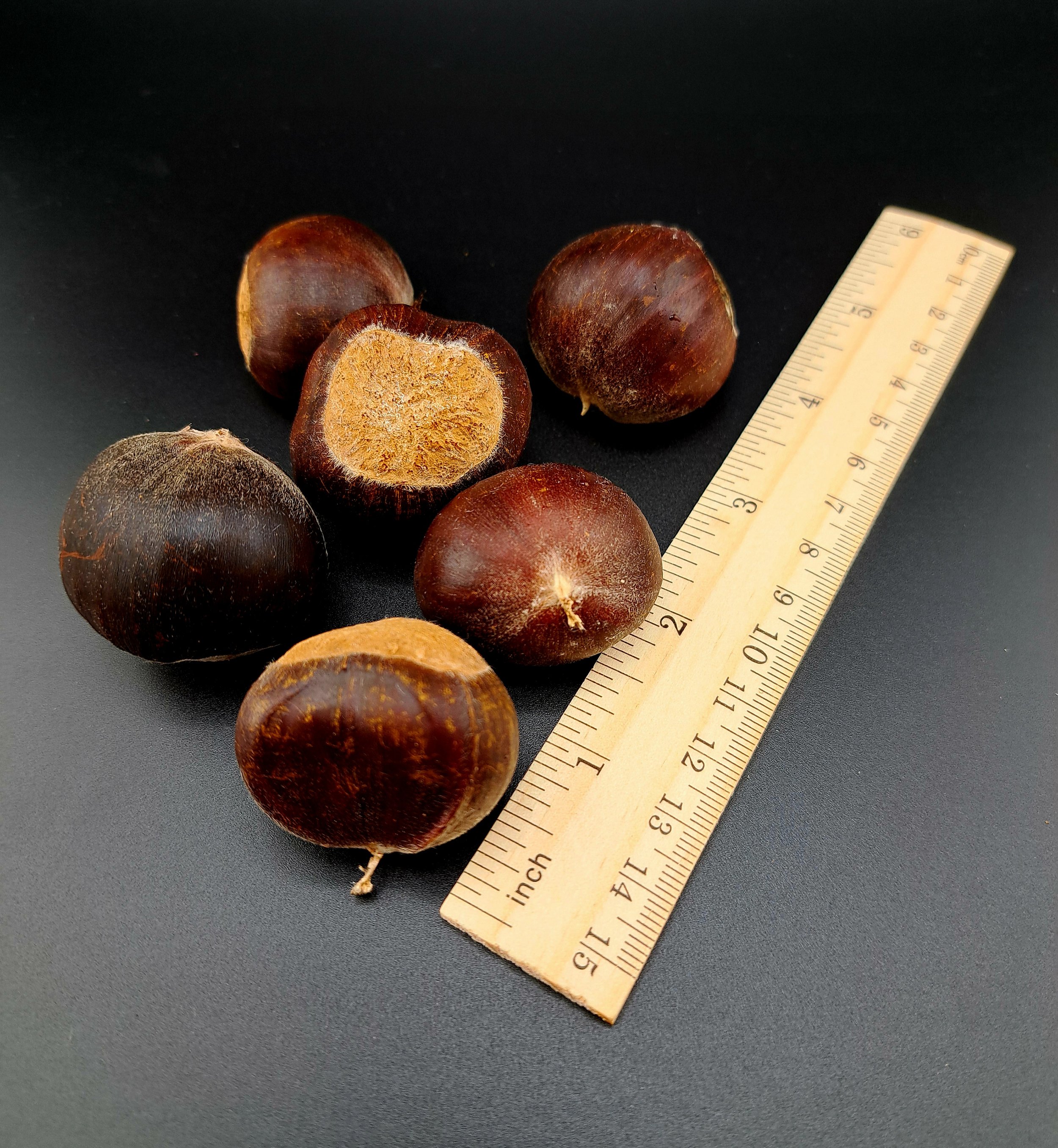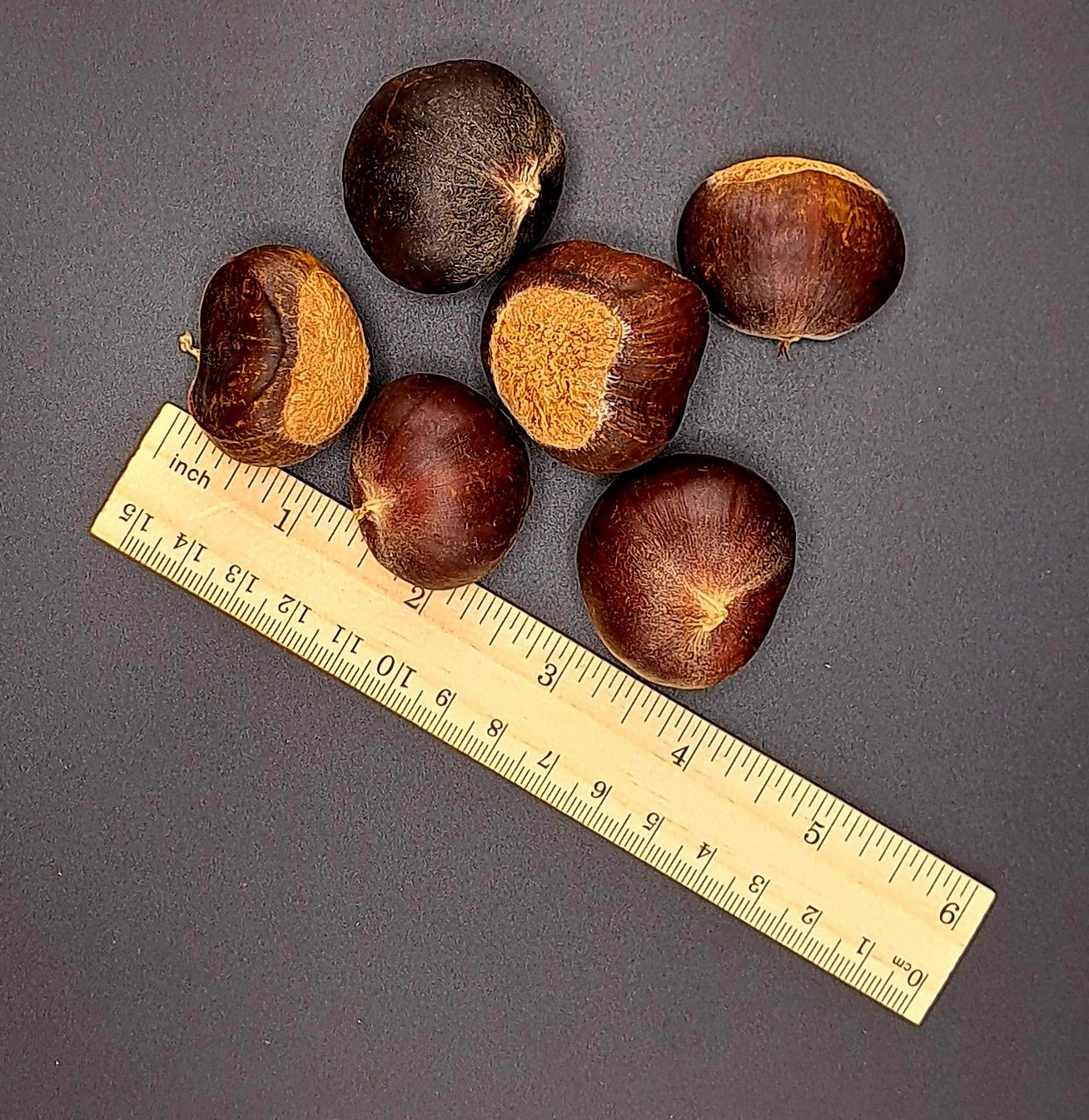

Dunstan Chestnut Seeds
One Pound
Dunstan Chestnut Seeds
One Pound
Planting instructions will be included with purchase. Keep refrigerated until ready to sow. One pound of nuts is approximately 25 seed nuts per pound
The Dunstan Chestnut is a hybrid chestnut tree developed for its resistance to chestnut blight, a devastating fungal disease that severely affected American chestnut trees in the early 20th century. The American chestnut (Castanea dentata) was once a dominant and economically important tree species in the eastern United States until the arrival of the chestnut blight (Cryphonectria parasitica), which nearly eradicated it.
The Dunstan Chestnut was developed by crossing surviving American chestnut trees with Chinese chestnut trees (Castanea mollissima), which are resistant to chestnut blight. The resulting hybrid trees exhibit a high level of resistance to the blight while retaining many desirable characteristics of the American chestnut.
Here are some key features and information about the Dunstan Chestnut:
Characteristics:
Size and Growth:
Dunstan Chestnuts are medium to large-sized trees that can reach heights of 40 to 60 feet (12 to 18 meters) with a similar spread.
Leaves:
The leaves are oblong, sharply toothed, and glossy green. They are arranged alternately on the branches.
Flowers:
Chestnut trees produce long, upright flower clusters called catkins. The flowers are typically wind-pollinated.
Nuts:
The Dunstan Chestnut produces large, sweet-tasting nuts that are similar in size and taste to traditional American chestnuts. The nuts are enclosed in a spiky husk.
Resistance to Blight:
One of the main features of the Dunstan Chestnut is its resistance to chestnut blight. This resistance allows the tree to survive and produce nuts even in areas where the blight is present.
Wildlife Attraction:
The sweet nuts produced by the Dunstan Chestnut are highly attractive to wildlife, including deer, turkeys, squirrels, and other animals. This makes it a valuable tree for wildlife habitat.
Planting and Maintenance:
Dunstan Chestnuts are relatively easy to grow and maintain. They prefer well-drained soil and full sunlight. Regular pruning may be necessary for shaping and maintenance.
Hybrid Origin:
The Dunstan Chestnut is a result of controlled hybridization efforts aimed at combining the blight resistance of Chinese chestnuts with the desirable qualities of American chestnuts.
Uses:
Wildlife Plantings: Dunstan Chestnuts are often planted for wildlife habitat improvement. The sweet nuts provide a valuable food source for various animals.
Timber Production: While not as historically significant as American chestnuts for timber, Dunstan Chestnuts can be used for wood products.
Ornamental Landscaping: Due to their attractive appearance and wildlife benefits, Dunstan Chestnuts can be used in larger landscapes for ornamental purposes.
The Dunstan Chestnut has played a role in efforts to restore chestnut trees to American forests, and its resistance to chestnut blight makes it a valuable addition to wildlife habitats. As with any tree planting, it's advisable to consider local conditions, climate, and soil types to ensure successful establishment and growth.
